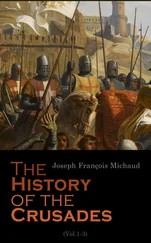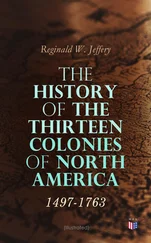414Dr. Abiel Holmes, in his American Annals, vol. ii. p. 5, says, "Maryland now contained about thirty-six thousand persons, of white men from sixteen years of age and upwards, and negroes male, and female from sixteen to sixty." I infer from this statement that slavery was in existence in Maryland in 1634; and I cannot find any thing in history to lead me to doubt but that slavery was born with the colony.
415Cabinet Cyclopædia, vol. i. p. 61.
416See Bacon's Laws, also Holmes's Annals, vol. i. p. 250.
417The following appeared in the Plantation Laws, printed in London in 1705: "Where any negro or slave, being in servitude or bondage, is or shall become Christian, and receive the sacrament of baptism, the same shall not nor ought not to be deemed, adjudged or construed to be a manumission or freeing of any such negro or slave, or his or her issue, from their servitude or bondage, but that notwithstanding they shall at all times hereafter be and remain in servitude and bondage as they were before baptism, any opinion, matter or thing to the contrary notwithstanding."
418McSherry's Hist. of Maryland, p. 86.
419Freedom and Bondage, vol. i. p. 249.
420McMahon's Hist. of Maryland, vol. i. p. 274.
421The following form was used for a long time in Maryland for binding out a servant.
This Indenture made the—— day of—— in the—— yeere of our Soveraigne Lord King Charles, &c betweene—— of the one party , and—— on the other party , Witnesseth, that the said—— doth hereby covenant promise, and grant, to and with the said—— his Executors and Assignes, to serve him from the day of the date hereof, untill his first and next arrivall in Maryland: and after for and during the tearme of—— yeeres, in such service and imployment, as the said—— or his assignee shall there imploy him, according to the custome of the Countrey in the like kind. In consideration whereof, the said—— doth promise and grant, to and with the said—— to pay for his passing, and to find him with Meat, Drinke, Apparell and Lodging, with other necessaries during the said terme; and at the end of the said terme, to give him one whole yeeres provision of Corne, and fifty acres of Land, according to the order of the countrey. In witnesse whereof, the said—— hath hereunto put his hand and seate, the day and yeere above written .
Sealed and delivered in the presence of——
— Relation of the state of Maryland , pp. 62, 63.
422Modern Traveller, vol. i. pp. 122, 123.
423McMahon's Maryland, vol. i. p. 278.
4241st Pitkin's United States, p. 133.
425McMahone says of this convict element: "The pride of this age revolts at the idea of going back to such as these, for the roots of a genealogical tree; and they, whose delight it would be, to trace their blood through many generations of stupid, sluggish, imbecile ancestors, with no claim to merit but the name they carry down, will even submit to be called ' novi homines ,' if a convict stand in the line of ancestry."
426With perhaps the single exception of South Carolina, of which the reader will learn more farther on.
427American Annals.
428Dr. Holmes says, "The total number of mulattoes in Maryland amounted to 3,592," in 1755.
CHAPTER XVII.
THE COLONY OF DELAWARE.
Table of Contents
1636–1775.
The Territory of Delaware settled in part by Swedes and Danes, anterior to the Year 1638.—The Duke of York transfers the Territory of Delaware to William Penn.—Penn grants the Colony the Privilege of Separate Government.—Slavery introduced on the Delaware as early as 1636.—Complaint against Peter Alricks for using Oxen and Negroes belonging to the Company.—The First Legislation on the Slavery Question in the Colony.—An Enactment of a Law for the Better Regulation of Servants.—An Act restraining Manumission.
Anterior to the year 1638, the territory now occupied by the State of Delaware was settled in part by Swedes and Danes. It has been recorded of them that they early declared that it was "not lawful to buy and keep slaves." 429But the Dutch claimed the territory. When New Netherlands was ceded to the Duke of York, Delaware was occupied by his representatives. On the 24th of August, 1682, the Duke transferred that territory to William Penn. 430But in 1703 Penn surrendered the old form of government, and gave the Delaware counties the privilege of a separate administration under the Charter of Privileges . Delaware inaugurated a legislature, but remained under the Council and Governor of Pennsylvania. But slavery made its appearance on the Delaware as early as 1636. 431
"At this early period there appears to have been slavery on the Delaware. As one Coinclisse was 'condemned, on the 3d of February, to serve the company with the blacks on South River for wounding a soldier at Fort Amsterdam. He was also to pay a fine to the fiscal, and damages to the wounded soldier.' On the 22d, a witness testifying in the case of Governor Van Twiller, (the governor of New Neitherlands before Kieft,) who was charged with neglect and mismanagement of the company's affairs, said that 'he had in his custody for Van Twiller, at Fort Hope and Nassau, twenty-four to thirty goats, and that three negroes bought by the director in 1636, were since employed in his private service.' Thus it will be seen that slavery was introduced on the Delaware as early as 1636, though probably not in this State, as the Dutch at that time had no settlement here." 432
And on the 15th of September, 1657, complaint was made that Peter Alricks had "used the company's oxen and negroes;" thus showing that there were quite a number of Negroes in the colony at the time mentioned. In September, 1661, there was a meeting between Calvert, D'Hinoyossa, Peter Alricks, and two Indian chiefs, to negotiate terms of peace. At this meeting the Marylanders agreed to furnish the Dutch annually three thousand hogsheads of tobacco, provided the Dutch would "supply them with negroes and other commodities." 433Negroes were numerous, and an intercolonial traffic in slaves was established.
The first legislation on the slavery question in the colony of Delaware was had in 1721. " An Act for the trial of Negroes " provided that two justices and six freeholders should have full power to try "negro and mulatto slaves" for heinous offences. In case slaves were executed, the Assembly paid the owner two-thirds the value of such slave. It forbade convocations of slaves, and made it a misdemeanor to carry arms. During the same year an Act was passed punishing adultery and fornication. In case of children of a white woman by a slave, the county court bound them out until they were thirty-one years of age. In 1739 the Legislature passed an Act for the better regulation of servants and slaves, consisting of sixteen articles. It provided that no indentured servant should be sold into another government without the approval of at least one justice. Such servant could not be assigned over except before a justice. If a person manumitted a slave, good security was required: if he failed to do this, the manumission was of no avail. If free Negroes did not care for their children, they were liable to be bound out. In 1767 the Legislature passed another Act restraining manumission. It recites:—
"Section 2. And be it enacted by the honorable John Penn, esq. with his Majesty's royal approbation, Lieutenant Governor and Commander in Chief of the counties of New-Castle, Kent and Sussex, upon Delaware, and province of Pennsylvania, under the honorable Thomas Penn and Richard Penn, esquires, true and absolute proprietaries of the said counties and province, by and with the advice and consent of the Representatives of the freemen of the said counties, in General Assembly met, and by the authority of the same , That if any master or mistress shall, by will or otherwise, discharge or set free any Mulatto or Negro slave or slaves; he or she, or his or her executors or administrators, at the next respective County Court of Quarter Sessions, shall enter into a recognizance with sufficient sureties, to be taken in the name of the Treasurer of the said county for the time being, in the sum of Sixty Pounds for each slave so set free, to indemnify the county from any charge they or any of them may be unto the same, in case of such Negro or Mulattoe's being sick, or otherwise rendered incapable to support him or herself; and that until such recognizance be given, no such Negro or Mulatto shall be deemed free." 434
Читать дальше












